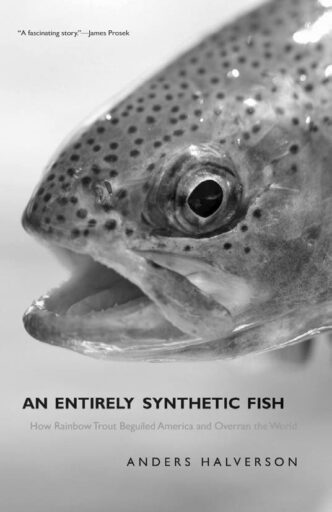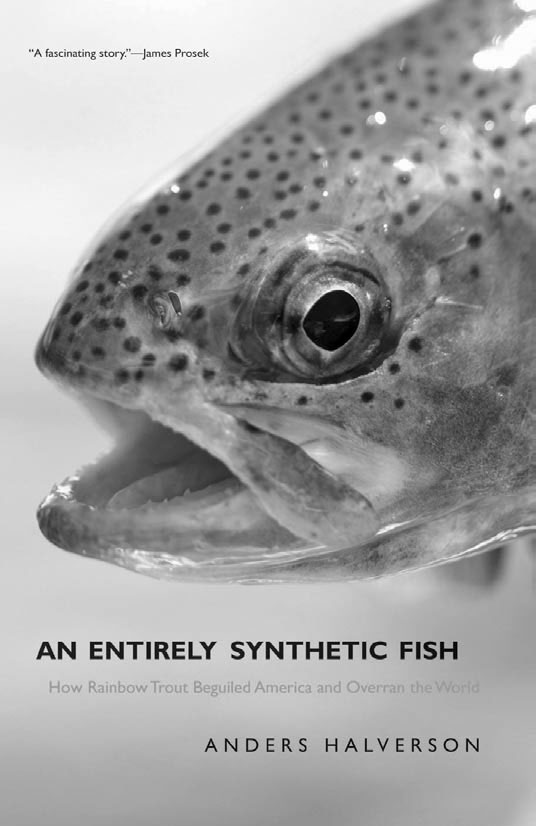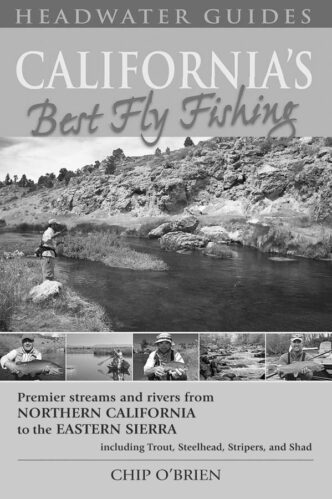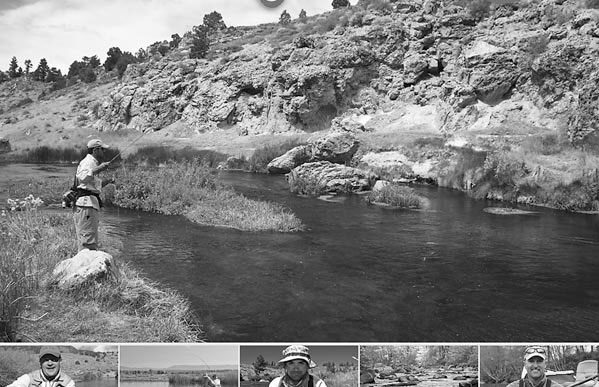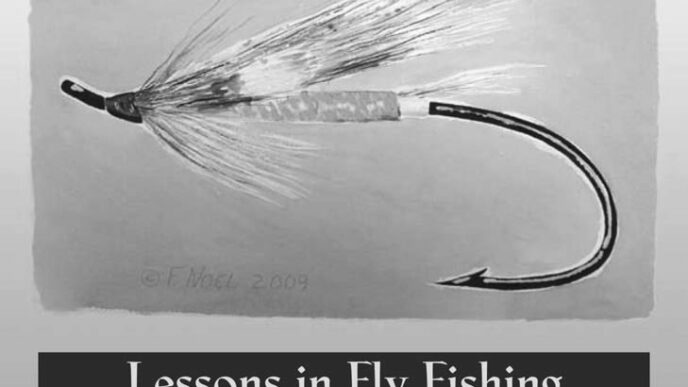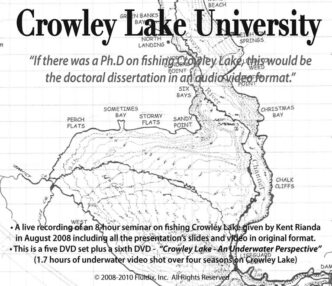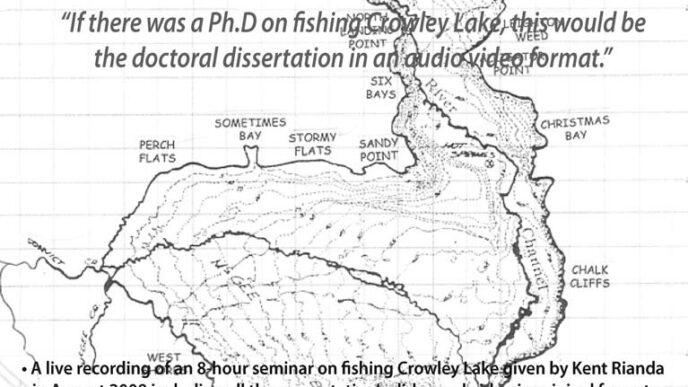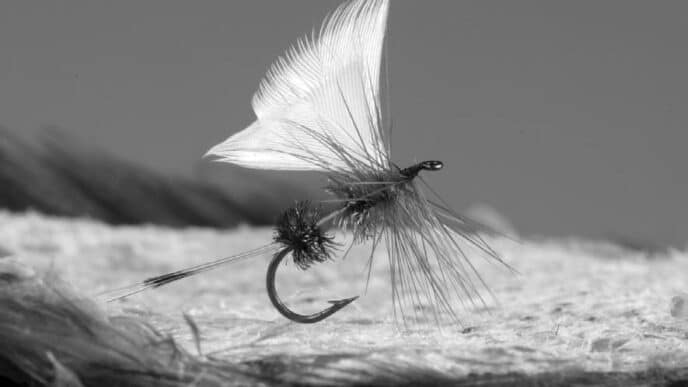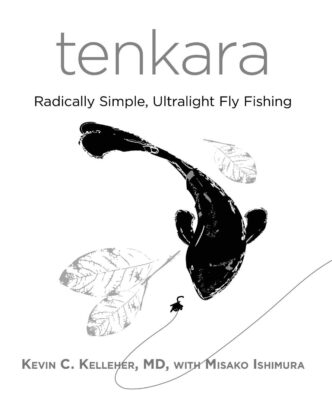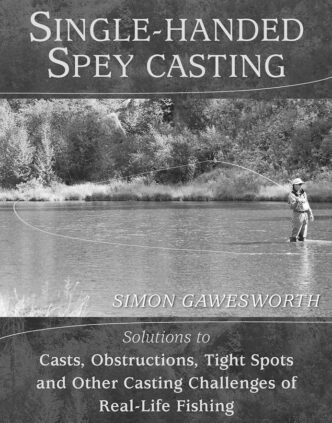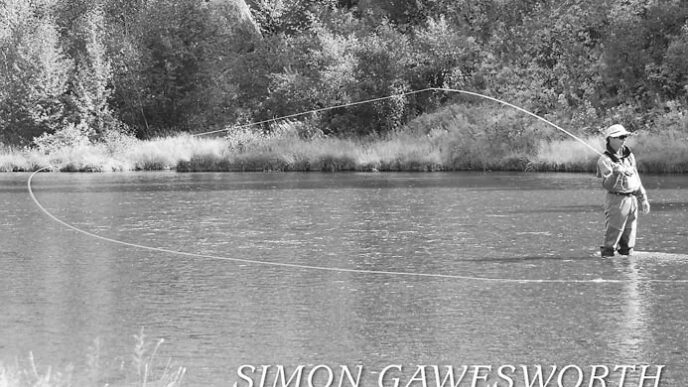An Entirely Synthetic Fish: How Rainbow Trout Beguiled America and Overran the World
By Anders Halverson. Published by Yale University Press, 2010; $26.00, hardbound.
When I read an advance copy of this book, I was enthralled. How could I not be? Chasing trout and studying their relationship with the environment have been my passion. My thoughts, though, were that this was going to be yet another fascinating story of man and nature published by a university press and, unfortunately, read by only a few of us geeks. How wrong could I be? Very.
Within several months of publication, An Entirely Synthetic Fish has received rave reviews from very nongeek corners ranging from the Washington Post, to the Seattle Times, to the Denver Post. The author has been extensively interviewed, including on National Public Radio, and is the subject of a Bloomberg podcast. Not bad for a book about fish.
The hype is well deserved. An Entirely Synthetic Fish is about how humans have modified, transplanted, and revered rainbow trout to the point that, as the author convincingly argues, trout have adopted and trained humans to be their benefactors and species-dispersal system. From a hatchery on the McCloud River, we have transplanted rainbows to the far corners of the globe, and the species now populates all continents except for Antarctica. The single most audacious stocking occurred here in the United States with the application of 20,000 gallons of rotenone into the Green River to remove 450 tons of native fishes from 30 miles of the river to make room for introduced rainbows.
Halverson documents the planting of rainbows immediately prior to the Civil War. Part of the motivation was spurred by George Marsh, who was one of the nation’s first conservationists and a Lincoln confidant. He felt New Englanders were losing touch with nature and in turn going soft. A return to the blood sports was his answer to a culture evolving into “a more effeminate, and less bold and spirited nation.” Planting trout and promoting the sport of fishing was nothing less than an act to save the country.
By the 1960s, governments realized that trout could help the nation by propping up local economies through tourism and the government itself through taxes and license revenues. With the increasing use of aircraft and of fish genetically modified to be easy to raise, transport, and catch, rainbows were stocked into every conceivable waterway.
Today, the environmental ramifications of these actions are clear, and the same agencies that used to plant rainbows blindly in the name of the national interest are now removing them from waters where they never belonged in the first place. Wind-up hatchery planters are now playing second fiddle to native and wild populations of trout.
An Entirely Synthetic Fish could have easily been just another one of a thousand hand-wringing, finger-pointing tomes penned by some environmental academic. (The author is a Ph.D. ecologist from Yale.) Instead, Halverson has written a well-paced, completely absorbing tale about how man and trout have changed the landscape of the planet. In the same way that Michael Pollan’s Omnivore’s Dilemma reached beyond the realm of foodies, An Entirely Synthetic Fish is connecting with an audience far larger than trout bums. If you happen to be an angler, consider that a bonus in your enjoyment of this great book.
Ralph Cutter
Pirates of the Flats
Six-episode ESPN TV series, featuring Tom Brokaw, Michael Keaton, Lefty Kreh, Thomas McGuane, Bill Klyn, Yvon Chouinard, and R. Valentine Atkinson. Coproduced by ESPN Outdoors and Orion Multimedia. Scheduled for monthly rebroadcast on ESPN through June 2010 at least. Check your local listings for dates, times, and channels.
It’s easy to take things for granted when we have no local stake in them — bonefish, for example. They’re a romance species for many of us: integral to the history of fly fishing in the salt, a part of our fly-fishing consciousness, and a reason to buy flats booties, sun gloves, and airline tickets south. But few of us living in California chase them more than a couple of times a year, and most of us do so fewer than a couple of times in our lifetimes. Until recently, there’s been little reason to think that bonefish are not going to be around as they have always been when we finally free up the time or the money to fish for them. Would that this were so.
Unfortunately, like our own populations of steelhead, salmon, and striped bass, bonefish populations aren’t what they used to be. One informed estimate has populations in the Florida Keys down over 80 percent since the late 1970s, with flats that once held lots of fish now hosting only a few or even none. There are still environments where bonefish thrive, but we have very little scientific data as why they do so in one place and not another. Not being a commercial species, bonefish haven’t benefited from the kind of government-funded research that generally goes to fish that have advocates with big-time financial clout. What’s overlooked here, of course, is that bonefish (and tarpon and permit) fisheries are powerful economic resources in communities visited by recreational anglers. One estimate puts the value of flats fisheries in Florida alone at $8 billion a year.
Enter the Bonefish and Tarpon Trust, headquartered in Key Largo and founded in 1998 by a group of prominent flats anglers. (Think of anybody who matters in the world of flats fishing, and he or she is likely on the list.) The BTT has put the visibility and clout of its directors, along with its money and considerable effort, into biological research on tarpon, permit, and bonefish. Learn the biology, the BTT decided, then apply that knowledge to conserving the fisheries, and that’s what’s happening. In addition, the BTT has served as a strong voice in interacting with regulatory authorities and government agencies and in educating anglers and bureaucracies alike on the value of catch-and-release angling. It’s a bottom-up effort, supported by the communities that benefit from recreational fishing, and it’s working. They’re doing more and more every day. (Check out their Web site at www.tarbone.org)
One of the BTT’s recent projects was to team with the sports network ESPN Outdoors and Orion Multimedia in producing a six-part TV series on the linked romance and plight of the bonefish. Narrated by angler and prominent broadcaster Tom Brokaw, Pirates of the Flats follows seven anglers — Brokaw, Lefty Kreh, actor Michael Keaton, Patagonia founder Yvon Choinard, author Thomas McGuane, photographer Val Atkinson, and the BTT director Bill Klyn — as they chase Bahamian bonefish and talk about conservation issues. And although this has little bearing on California fisheries, no California angler who cares about habitat conservation, about the iconic species that have defined saltwater fly fishing, and about preserving the opportunity to fish for them can afford to ignore the series’ message. Fine entertainment values make that message pretty easy to swallow.
Set in the Bahamas at Abaco Lodge, where 400 square miles of backcountry flats still host extremely healthy bonefish populations, our famous anglers — the DVD calls them “luminary” — pair up to fish numerous gorgeous flats, where they cast to, hook, and release a bunch of bonefish. As they fish, we learn a bit about each sportsman and get his take on why the fishery matters and how it may be conserved by the stewardship of concerned anglers. It’s an effective combination of video fish porn and conservation documentary. If the fishing scenes are the candy — and there are multiple such scenes in each episode, most with no more than the minimum of “that’s a nice fish” commentary — the meat, for me at least, lies in the exploration of bonefish conservation by the series and the BTT’s work with graduate students and scientists at institutions such as the Cape Eleuthera Institute and with local governments to uncover everything from the basics of bonefish biology to where they spawn and how they migrate. The six episodes are each about 30 minutes long, produced in segments that allow for commercial breaks and references to the official sponsors of the series: the Bonefish and Tarpon Trust, Hell’s Bay Boatworks, Costa, and TakeMeFishing.org. So we jump from a couple of guys speeding along in flats boats or casting to fish to interviews or group discussions or, in some episodes, segments that follow research biologists as they weigh or tag fish or talk about their work. The series gets more detailed about conservation issues in its later episodes, and for me, that was a good thing. Fish addict that I am, I wearied a bit watching these guys cast, hook, land, and release fish, and I looked forward, after the first half dozen such events, to the more substantive discussion of the BTT’s conservation efforts.
I’m also still wondering why — save for some mass-market resonance with those Pirates of the Caribbean movies — this series is called Pirates of the Flats. The bonefish certainly aren’t pirates, and I can’t quite see how the anglers are. Michael Keaton has played scoundrels, but he’s squeaky clean here. And who’s more trustworthy than Tom Brokaw and Lefty Kreh? Am I missing something?
Minor gripes aside, Pirates of the Flats succeeds admirably in providing a taste of what fly fishing for bonefish is like, introducing us to some interesting characters, and above all, publicizing the issue of bonefish decline and conservation. Were it simply a one-shot TV viewing experience, that would still be admirable. That it does so in a format that’s seen by multiple thousands of ESPN viewers in multiple rebroadcasts is huge. I’m less confident, though, that the series provides any answers as to how we’re going to change things that have already gone south: how, for example, researchers who “bring an angler’s passion to their fieldwork” are going to be successful in reversing a discouraging decline in the Keys. Still, knowledge is power, and the BTT is accumulating both. A subtext to the fishing and the conservation message is the explicit tribute that the series makes to Lefty Kreh for his contributions to angling. It’s terrific to see Lefty doing his thing, casting better than anyone else in the group, and commenting with the force of sheer intelligence and long experience on fishing, on casting technique, and on why we need to change our ways in order to have anything left for future generations. The guy’s a national treasure.
D. C. Ounty



